



F irst published 2022 by Nosy Crow Ltd.

The Crow’s Nest, 14 Baden Place, Crosby Row, London SE1 1YW, UK
Nosy Crow Eireann Ltd 44 Orchard Grove, Kenmare, Co Kerry, V93 FY22, Ireland
www.nosycrow.com

ISBN 978 1 83994 538 0
‘The National Trust’ and the oak leaf logo are registered trademarks of The National Trust (Enterprises) Limited (a subsidiary of The National Trust for Places of Historic Interest or Natural Beauty, Registered Charity Number 205846) Nosy Crow and associated logos are trademarks and/or registered trademarks of Nosy Crow Ltd.
Text © Anna Wilson 2018, 2019, 2020, 2021, 2022 Illustrations © Elly Jahnz 2018, 2019, 2020, 2021, 2022
The right of Anna Wilson to be identif ied as the author and Elly Jahnz to be identif ied as the illustrator of this work has been asserted.
All rights reserved
This book is sold subject to the condition that it shall not, by way of trade or otherwise, be lent, hired out or otherwise circulated in any form of binding or cover other than that in which it is published. No part of this publication may be reproduced, stored in a retrieval system, or transmitted in any form or by any means (electronic, mechanical, photocopying, recording or otherwise) without the prior written permission of Nosy Crow Ltd.
A CIP catalogue record for this book is available from the British Library.
Printed in China
Papers used by Nosy Crow are made from wood grown in sustainable forests.
1 3 5 7 9 8 6 4 2
To Sebastian with love. Grow up wild, curious and full of joy.
For Charlie, who loves sea swimming as much as I do –thanks for inventing ‘It’s a Rubbish Game!’ A.W.
E.J.
Nature
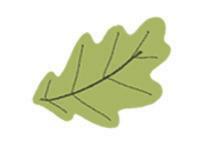

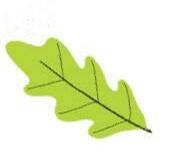

A Children’s Almanac
 Anna Wilson Elly Jahnz
Anna Wilson Elly Jahnz
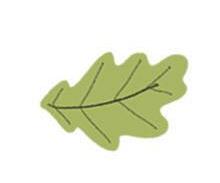

The first almanacs were created about 3,000 years ago! They were written by the ancient Egyptians, who used a kind of paper made from reeds known as papyrus. The writers listed all the dates that were thought to be lucky or unlucky, and made predictions about the weather. Farmers used these almanacs to help them know when to plant seeds and when to harvest crops.
Nowadays you can also find almanacs (like this one!) which have fun facts about each month – things to do indoors and outdoors, animals to spot, festivals to celebrate and seasonal food to grow, cook and eat. They also contain information about the weather, the night sky and all sorts of other amazing facts.

This book contains activities which involve things like knives, saws, hammers and nails and hot ovens. There are also a lot of fun things to do outside which involve fire and very cold water! All the activities are safe if you are sensible, follow safety guidelines and take a grown-up along to look out for you.




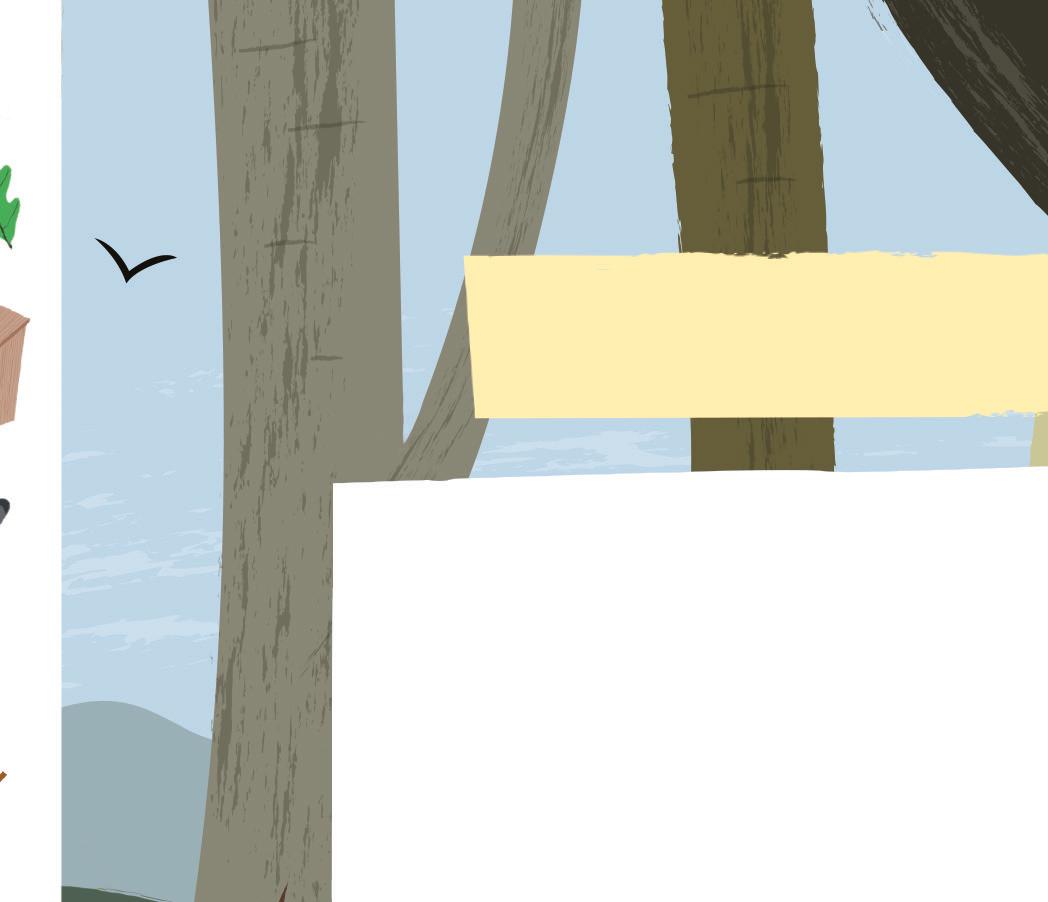


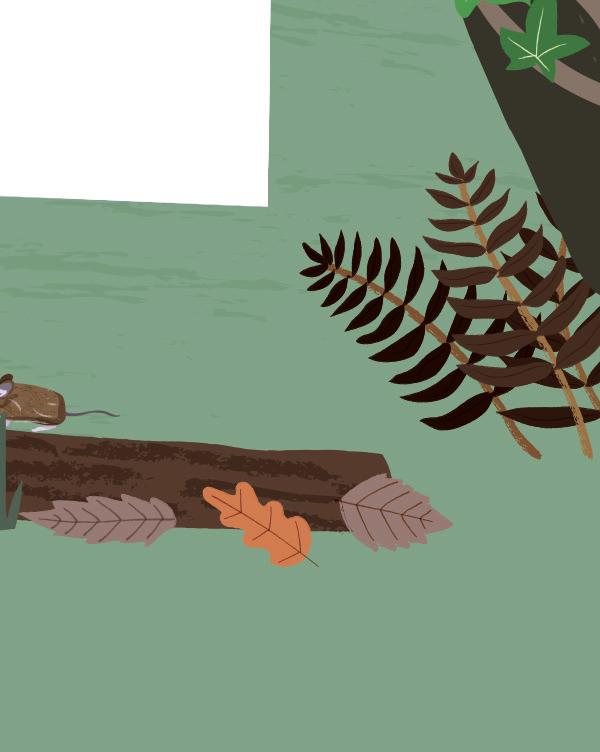

January . . . . . . . . . . . . . . . . . . . . . . February . . . . . . . . . . . . . . . . . . . . . March . . . . . . . . . . . . . . . . . . . . . . . . April May . . . . . . . . . . . . . . . . . . . . . . . . . . . June . . . . . . . . . . . . . . . . . . . . . . . . . . July . . . . . . . . . . . . . . . . . . . . . . . . . . . August . . . . . . . . . . . . . . . . . . . . . . . September . . . . . . . . . . . . . . . . . . . October . . . . . . . . . . . . . . . . . . . . . . November December . . . . . . . . . . . . . . . . . . . . Calendar . . . . . . . . . . . . . . . . . . . . . Notes . . . . . . . . . . . . . . . . . . . . . . . . . Glossary . . . . . . . . . . . . . . . . . . . . . Index . . . . . . . . . . . . . . . . . . . . . . . . . 6-19 20-33 34-47 48-61 62-75 76-89 90-103 104-117 118-131 132-145 146-159 160-173 174-179 180-185 186-189 190-192
1st New Year’s Day/First-footing 5th Twelfth Night/Wassailing 6th Epiphany 13th Lohri (Punjabi midwinter festival) 22nd Chinese New Year (Year of the Rabbit) 25th Burns Night
75 years ago . . .
On 12 January 1948, the London Co-operative Society opened Britain’s first self-service supermarket in Manor Park, London. Before then, you couldn’t help yourself to things from the shelves – you had to ask a shopkeeper for what you wanted.
160 years ago . . .
On 10 January 1863, the London Underground was opened. The Metropolitan Railway was the first line on the Underground. It ran for 6 kilometres between Farringdon Street and Bishop’s Road, Paddington.
250 years ago . . .
On 17 January 1773, Captain James Cook and his crew became the first Europeans to sail below the Antarctic Circle.
SARA COLERIDGE (1802–1852)
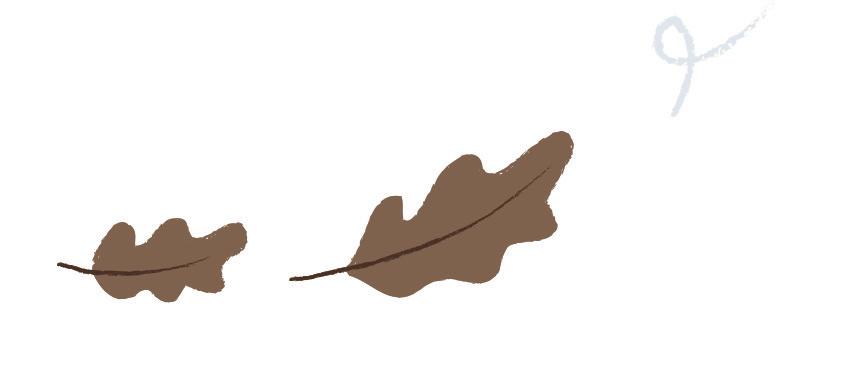
January can be a dull and dreary month after the excitement of Christmas and New Year’s Eve – unless it snows of course! Who doesn’t love a ‘snow day’? Even if it doesn’t snow, there are still lots of lovely things you can do, both outdoors and indoors, this month. You could wrap up warm and go for a walk to see what you can find. Yes, the trees are bare, but you should still be able to spot birds and other creatures out in the park or garden. There are also some wonderful festivals this month which offer a good excuse for getting friends round or throwing a party. So maybe January is not so dull after all!
Why is January Called January?

The calendar we use today was invented by the Romans. January was named after the Roman god Janus, who was the god of gates and doorways. He was always drawn with two faces looking in opposite directions – one face looked back at the year that had passed, and the other looked forwards into the new year.





8
In the United States of America, the third Monday of January is known as Martin Luther King Day. On this day, people remember the important work Martin Luther King did to achieve equal rights for people of colour.
New Year’s Resolutions
On 31st December we often talk about ‘making resolutions’ for the new year. Why do we do this?

The tradition of making resolutions started with the Romans too. Because the January god, Janus, was looking backwards and forwards at the same time, he became a symbol for the Romans of forgetting what had happened in the past and moving on into the future. January therefore became known as a month in which to forgive people and be kind. Nowadays, people seem to worry more about getting fit and not eating chocolate – maybe we should be more like the Romans and make resolutions to be kinder instead?
Here are some ideas for resolutions that you might manage to keep . . .
• Look out for someone at school who needs a friend.
• Have a cake sale or organise a sponsored silence or a sponsored walk for charity.

• Clear out your old toys and clothes and take them to a charity shop. (Check with an adult before you give these things away!)
• Help out around the house and/or garden, if you have one.
9
The colourful festivals of light such as Christmas, Hanukkah and Diwali might be over, but January has its fair share of celebrations to look forward to.
5th January Twelfth Night


















Twelfth Night is a Christian festival which marks the end of the Christmas period. Sometimes it is celebrated on 5th January and sometimes on 6th January! It depends on whether you count the Christmas season as starting on 25th or 26th December.
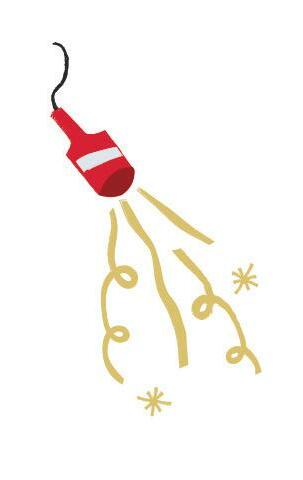





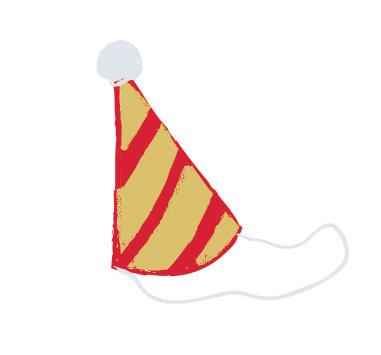


5th January Wassailing
Wassailing is a pagan tradition. The word wassail comes from the Anglo-Saxon words waes hael which mean ‘good health’. The festival is like many other winter celebrations in that it looks forward to what people hope for in the new year to come: good weather, good health and a good harvest.
Wassailing involves going out into the countryside to bless the apple trees. The wassail king and queen lead everyone in a sing-song around the tree to encourage it to produce lots of apples.
The wassail queen sometimes climbs the tree and offers it some bread soaked in cider. You could make mulled apple juice to soak bread in instead.
10
6th January Epiphany
6th January is also known as Epiphany or the Feast of the Three Kings. In Britain there is an old superstition that it is unlucky to leave your Christmas decorations up after this date. In some other countries 6th January is called St Nicholas’s Day, and this is the day on which children get presents instead of Christmas Day.
13th January Lohri
Hindus and Sikhs all over the world celebrate Lohri. During Lohri, songs are sung to the sun god Surya, thanking him for his warmth and praying for his return after the cold weather.
People drink gurh – a delicious sugary drink made from sugar cane. Gajak is also eaten – a thin, dry sweet made from roasted sesame seeds cooked in sugar syrup and spices. Children go from house to house singing folk songs and are given sweets. In the evening, a bonfire is lit and people gather together to dance.
25th January
Burns Night
Burns Night celebrates the birthday of Scotland’s most famous poet, Robert Burns. He wrote the song ‘Auld Lang Syne’, which we sing on New Year’s Eve. In Scotland, people have a Burns Night supper, which includes the national dish of haggis, neeps (mashed turnips) and tatties (mashed potatoes).
11
22nd January Chinese New Year



Chinese New Year is a noisy and colourful occasion and there will be festivities in big cities throughout Britain. There are firecrackers, lion and dragon dances, music, parades, lanterns and special foods such as noodles. People wear red clothes for luck and to ward off evil spirits.

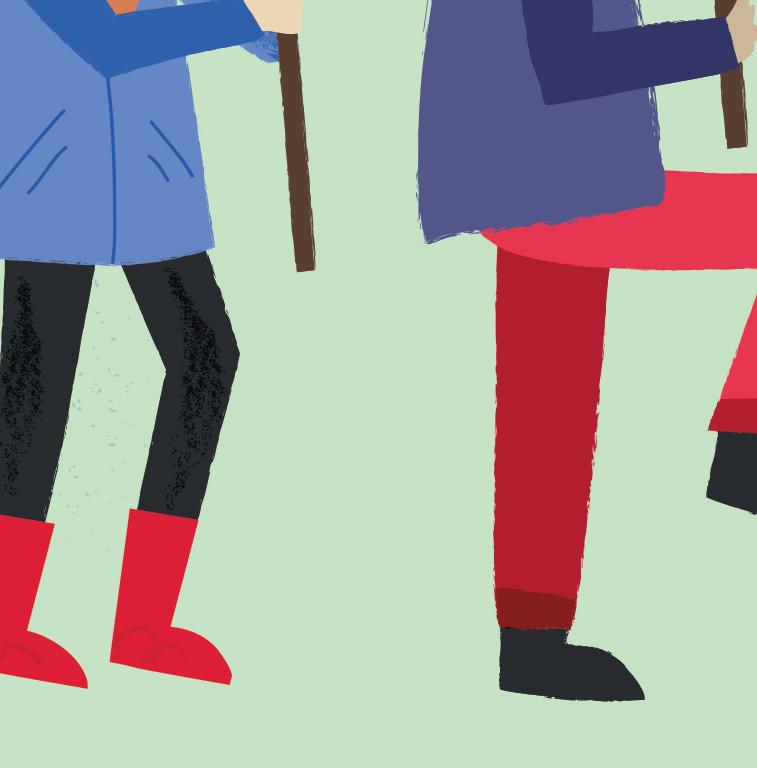




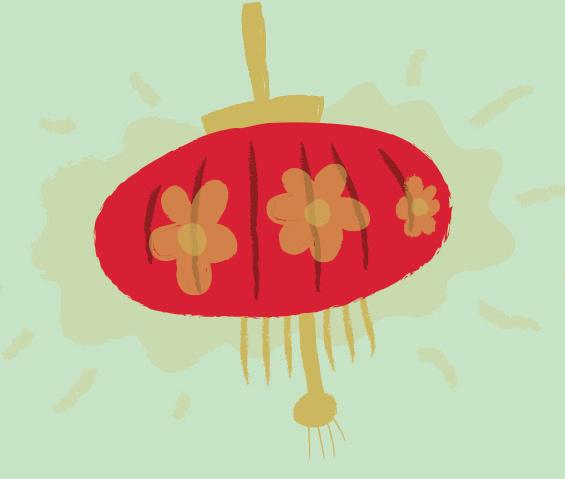
2023 is the Year of the Rabbit, the fourth of the 12 animals in the Chinese Zodiac. In Chinese culture, people born in the Year of the Rabbit are said to be brave and active people who enjoy challenges and adventures.








The decorations for Chinese New Year are mostly all red. This is because red is considered a very lucky colour – it is the symbol for wealth and happiness and good fortune and it is believed to scare away any evil spirits. This is why red lanterns can be seen decorating the streets at this time.

12
You will need:
Make a Paper Chinese Lantern
Why not make your own lantern to hang up inside? Make sure you never put a candle flame in or near the lantern. Also do not
it outside as it will float away and

litter. When your celebrations are
pack the lantern away and


year,


the materials
Blow up the balloon to the size you want your lantern to be and tie a knot in the end.
Tear up the newspaper or tissue paper into squares of roughly 2-3 cm. Paste the paper all over the balloon using the glue and a brush and leaving the knot free.
Leave this first layer to dry and then complete step three, four or five times.
Leave the balloon to dry out completely – overnight is best.
Once the balloon is dry, you can paint it! Remember, red is the luckiest colour, but you can decorate it with gold or yellow too, once the red paint has dried.


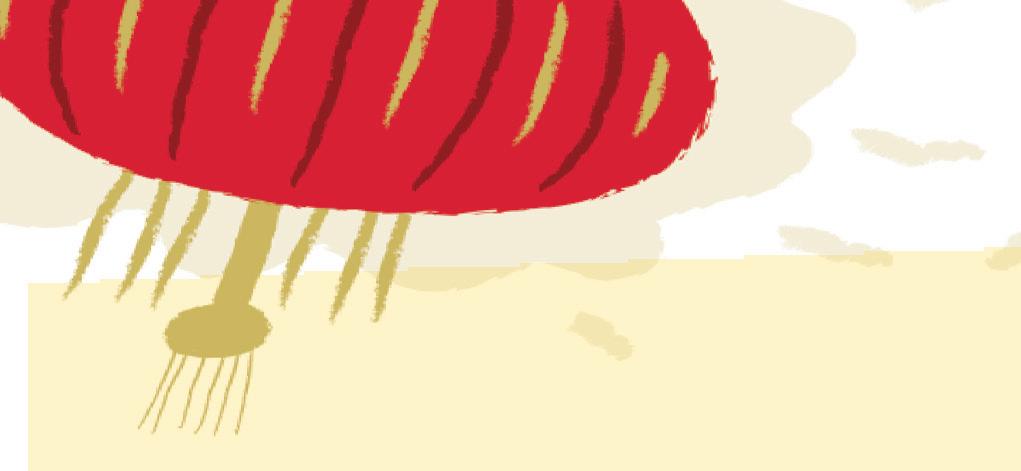

When the paint is all dry, you can pop the balloon inside! Ask an adult to help you to do this with a pin.
Cut the knot of the balloon with some scissors – there should be a small hole now so that you can pull the balloon out of the paper ball.












Ask an adult to help you to cut a bit more of the paper away so that you have a paper bowl.
Make two holes in the top of the bowl so that you can thread string through to hang your lantern up.
Put an LED tea light in the bottom of the bowl so that your lantern lights up safely.
Hang your lantern in your bedroom or in the window of your house so that people can see it when they walk by!
13
Balloon Sheets of newspaper or tissue paper PVA glue Red poster paint Gold or yellow paint Paintbrushes Pin Scissors Skewer String LED tea light (optional)
3 1 2 4 5 6 7 8 9 10 11 12
release
cause
over, you can
reuse it next
or recycle
you have used.
Just as the festivals remind us that January is a month of hope and looking forward to new things, nature is doing its best to give us hope too. If you go out into the garden, the park or the woods near where you live, you will see signs of new life even on the darkest day. It depends on which area of the country you are in, of course. In the colder northern regions, plants take longer to appear, while down in the south you might see green shoots as early as 1st January.
One of the first plants that starts to peep up out of the ground this month is the snowdrop. These tiny white and green flowers might look fragile, but they can survive during the coldest weather – even with snow and ice!
Other plants are growing too: have a look at the trees next time you go on a walk. Can you see any hazel catkins? They grow long before there are any leaves on the trees.





And then there are all the animals and birds to look out for. Squirrels are about, trying to remember where they buried their nuts and seeds in the autumn! Have a look for birds building their nests too –it may seem early, but blue tits and coal tits are very busy collecting twigs and feathers and fur for their nests. If you do find a nest, don’t touch it even if it looks old – birds will not come back and lay their eggs there if a human has disturbed it.

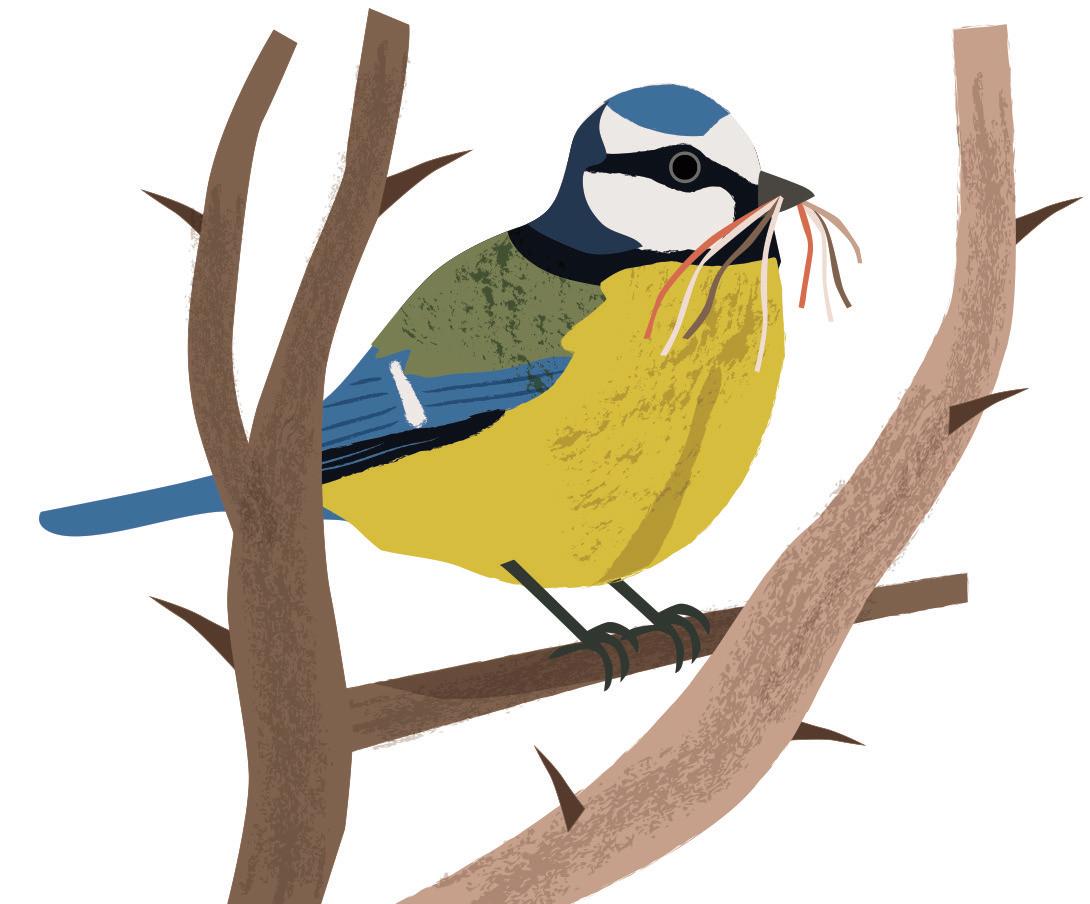
14
Nature Notebook








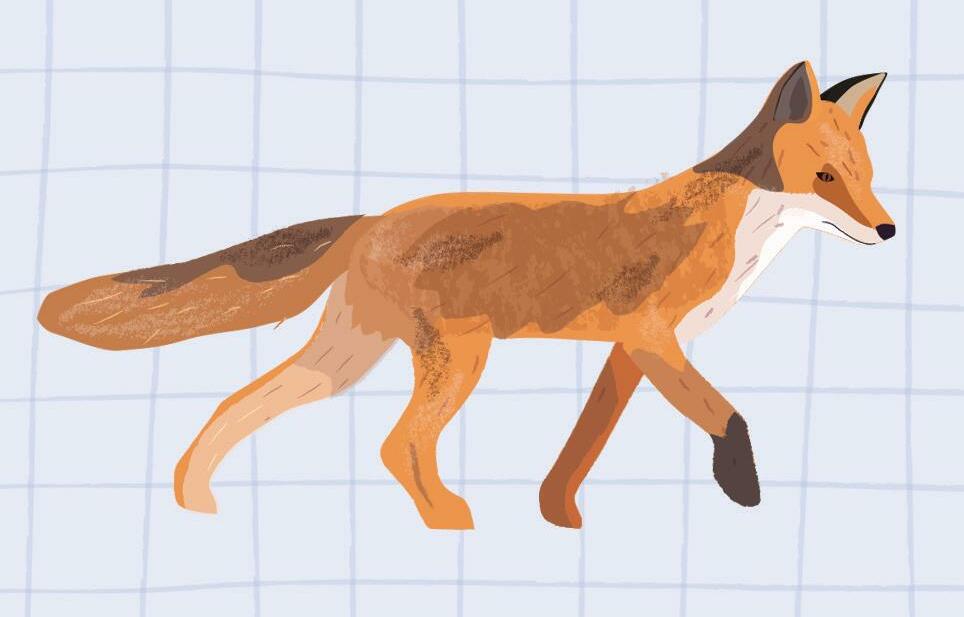











Take some sheets of scrap paper, fold them in half to make a booklet, then staple them together where you’ve made the fold.

Remember to make the notebook small enough to fit into a pocket so you can take it with you wherever you go.










Tie a piece of string to a pencil and stick the loose end of the string into the notebook with sticky tape or make a hole in the pages and thread the string through. Use the pencil to note down where and when you see things while you are out and about.
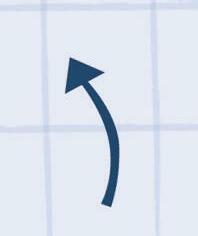


























15
Mouse Owl Rabbit Daffodils Snowdrops Hazel catkins Primroses Fox Make a
Snowdrops Hazel 1 2 3
Sometimes it’s very tempting to stay snuggled up at home in January, but it’s amazing how much better we feel once we have been outside for a walk. One of the best places to go to is a forest or wood where there are evergreen trees. You could try using all five of your senses while you are on your winter walk:
Sight Look closely at the trees. Many conifer trees (such as pine, spruce and fir) grow in a spiral pattern. You can guess how old the tree is by counting the spirals, or ‘whorls’, because after about two years, the tree will grow a new whorl of branches each year.
Sound Stop and listen to the noises of the forest or wood. If it’s dry, you could even lie down on the ground for a bit. Can you hear the wind through the trees? Or the rustle of animals or birds? How does the ground sound when you walk on it?
Touch Have a look around you for pine cones or dried leaves. What do they feel like? Run your fingers over a tree trunk. Do you feel excited? Happy? Calm?
Smell Breathe in the smells around you. If you’ve walked here before, does the wood smell different to the last time you were here?
Taste We can’t eat the actual trees, of course! But when we smell, we use our sense of taste as well. What can you taste from the air around you?
16
1 2 3 4 5
Recipe for Mini Toads
When the weather outside is frightful, it’s always nice to cook up something delightful! Toad-in-the-hole is an especially comforting meal as the sausages are cooked in a batter like Yorkshire pudding, so it’s filling, warm and tasty. These ‘mini toads’ are perfect for a party or a quick and simple tea. The recipe is easy, but you’ll need help getting the tin in and out of the oven.
You will need:
Teaspoon
Mixing bowl

Measuring jug
Whisk
12-hole muffin tin
Heatproof surface
Oven gloves
2 tablespoons of sunflower oil 24 mini sausages or 12 chipolatas cut in half 3 large eggs 150 ml plain flour 150 ml milk (optional)
Heat the oven to 220°C/200°C fan/gas mark 6.
Put two mini sausages or two halves of a chipolata in each muffin hole.
Drizzle the sunflower oil over the sausages. Cook in the oven for about 15 minutes until the sausages have turned brown.
While the sausages are cooking, weigh out the flour and put it in the mixing bowl.
Make a small well in the flour with your hand and crack the eggs into the dip.
Pour a little of the milk on to the eggs and start whisking, then add the rest of the milk slowly.
Keep whisking until you have a thin batter that looks like double cream.
Pour the batter into a measuring jug.
Ask an adult to get the sausages out of the oven and put the muffin tin on a heatproof surface.
Ask for help pouring the batter
top of the sizzling-hot sausages so that you fill each muffin hole about three quarters of the way up. Put the muffin tin back in the oven and cook for another 15 minutes until the batter has risen and is golden – if your oven has a glass door you can watch the batter rise!
Take the tin out of the oven
cool slightly before removing them with a spatula.
them with ketchup
and












you are really hungry! You won’t feel cold and wintery

17
Scales
Spatula
and let the ‘toads’
Eat
–
mashed potato if
now! 3 1 2 4 5 6 7 8 9 10 11 12
on
13 14
Maybe a trip to the seaside is not at the top of your list of things to do at this time of year! It’s true that it’s too chilly to go for a swim or a paddle, as the sea temperature has dropped to between 6°C and 10°C. However, you can still have fun hunting for shells, pebbles and seaweed. And there are some beautiful seabirds and other creatures for you to spot. Common seals can be seen along the British coastline, and in Scotland, Wales and Cornwall you might also see porpoises. Wherever you go, make sure you take your home-made nature notebook with you so that you can write down or draw what you spot!







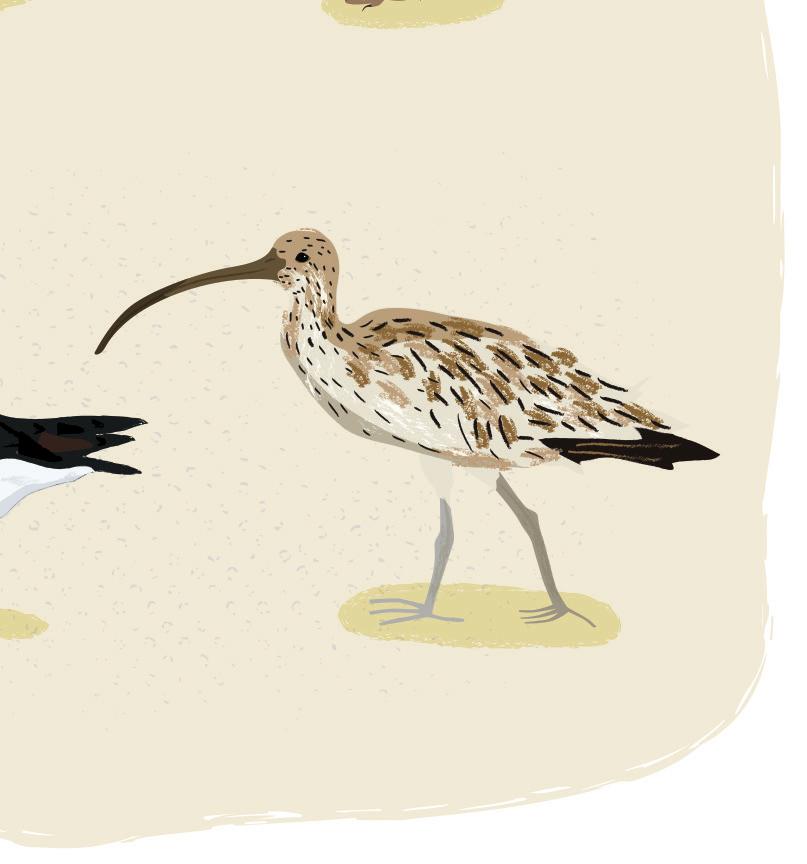
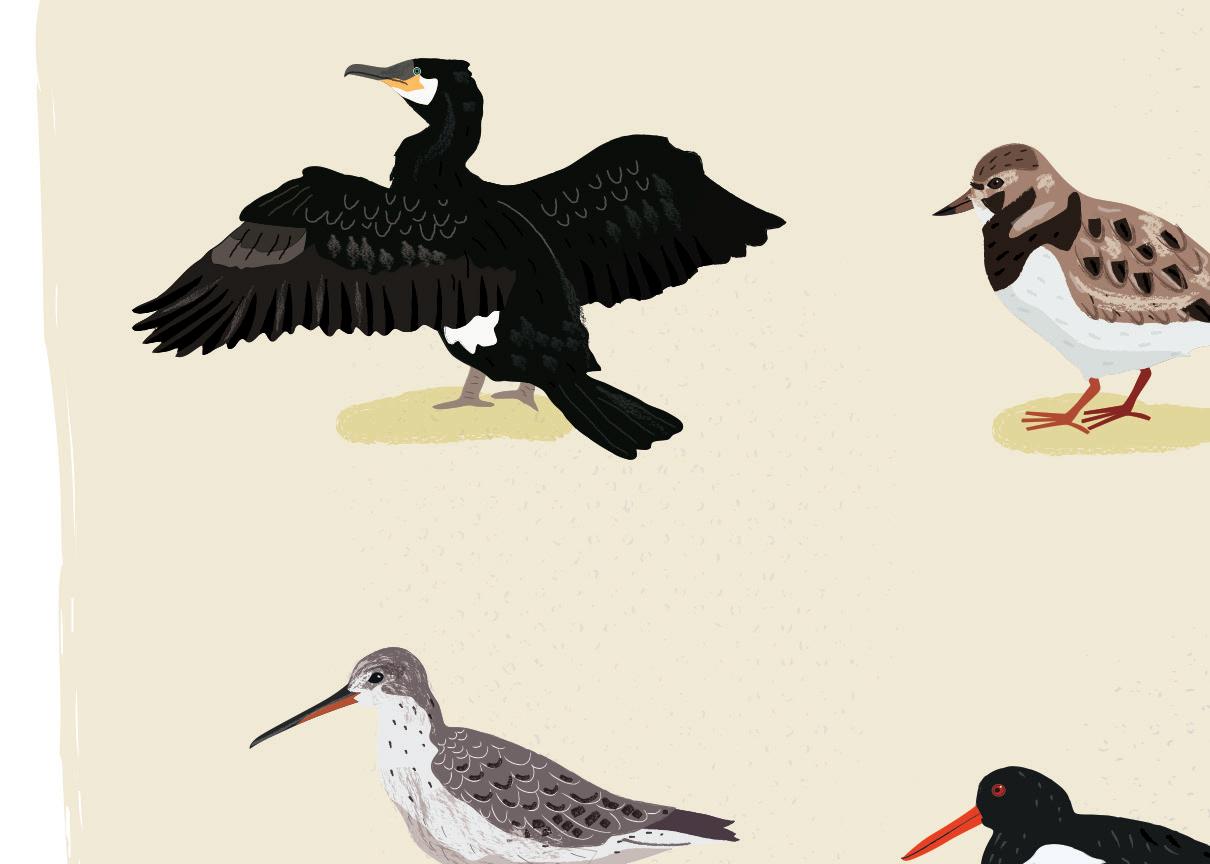
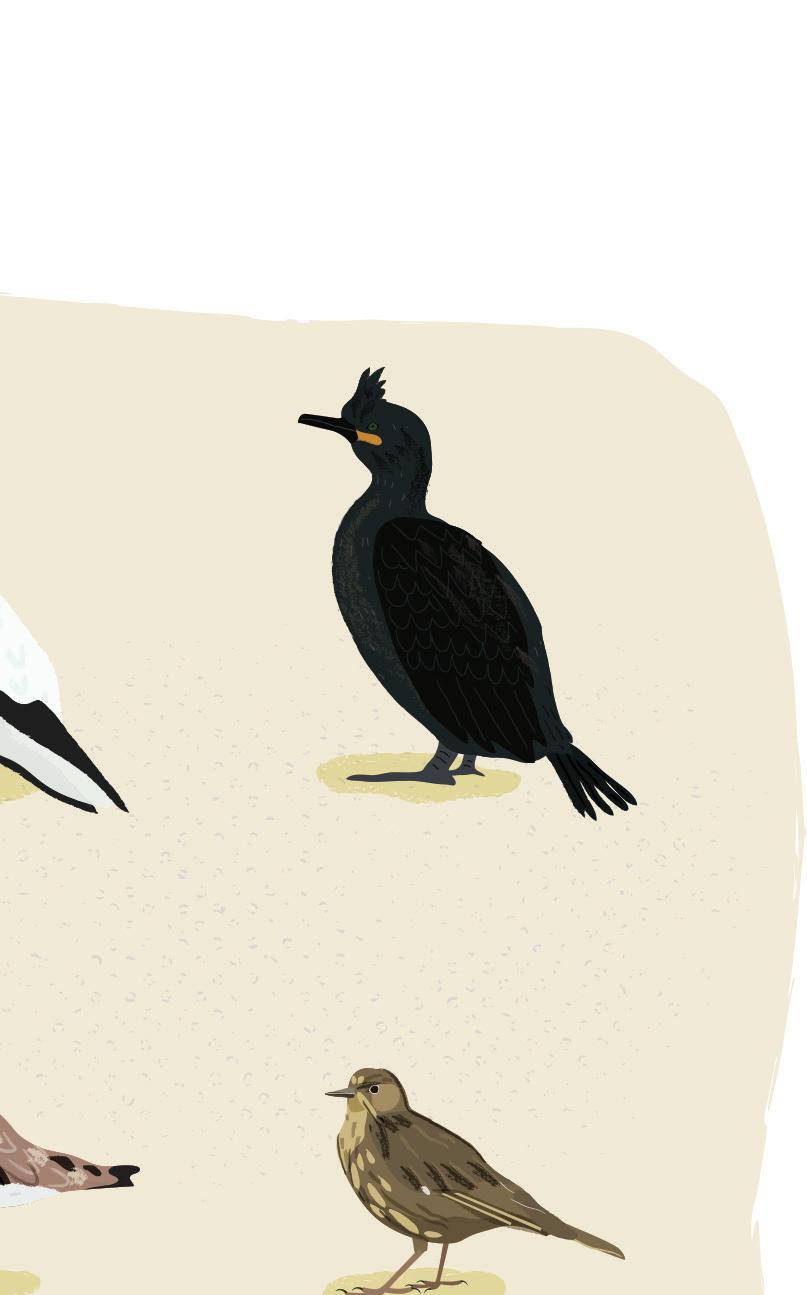


18
Turnstone
Cormorant
Redshank
Rock pipit
Oystercatcher
Curlew
Gannet
Shag
Take a bucket and a net with you too. The weather may not be good enough for you to sit about making sandcastles, but hopping between the rock pools will keep you warm. See how many different objects you can find. The winter storms bring in all sorts of treasures, from pretty shells to funny-shaped driftwood to sea-softened pieces of coloured glass. Have a competition with your friends and family – the person with the most items wins. If you’re really lucky, you may even find some real buried treasure!
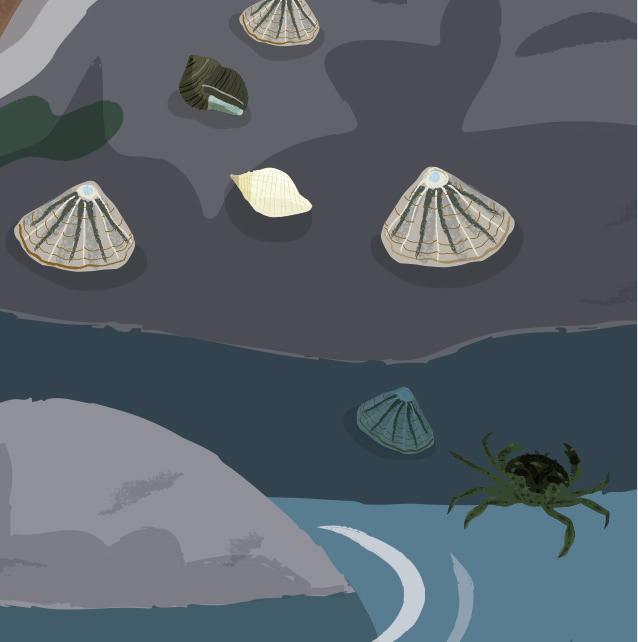
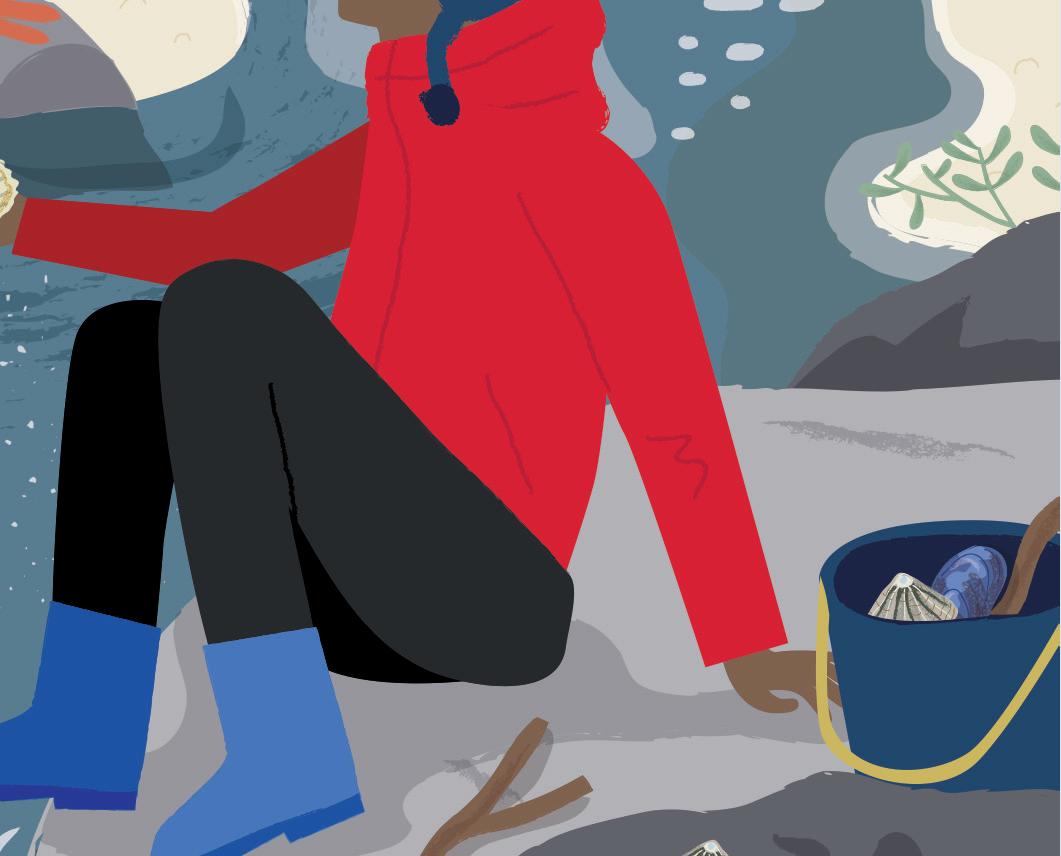

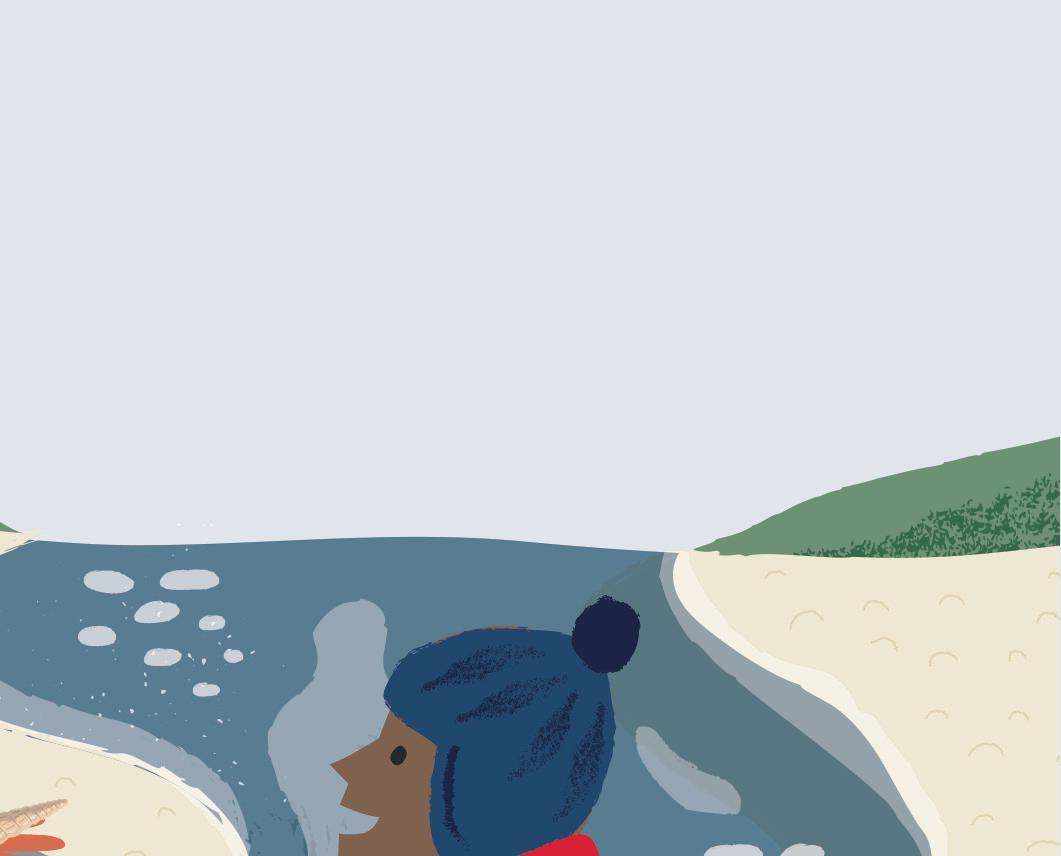

Almost three quarters of the surface of our planet is made up of the oceans. This is the reason that Earth looks blue from outer space.

19











 Anna Wilson Elly Jahnz
Anna Wilson Elly Jahnz









































































































































